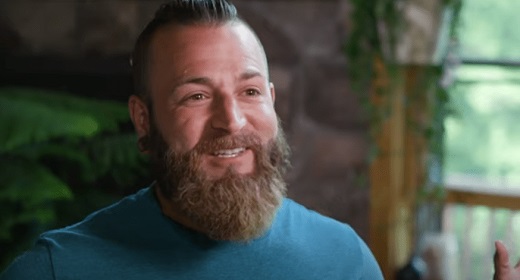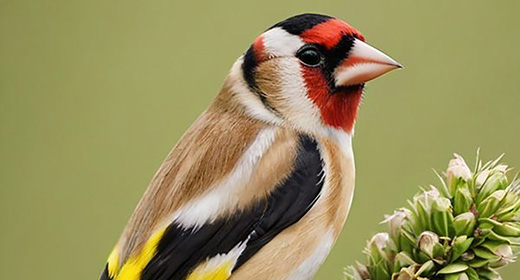by Maia Szalavitz: Meditation isn’t just for hippies any more. And it’s not all about saying ommmm…
Jon Kabat-Zinn, an MIT-trained molecular biologist, began meditating in 1966, when the practice was primarily the province of hippies and gurus, not scientists. Now, thanks in large part to his efforts, it has become mainstream medicine. Dozens of studies have since shown the benefits of what he termed Mindfulness-Based Stress Reduction (MBSR) in treating cardiovascular disease, depression, addictions, chronic pain and many other conditions.
Kabat-Zinn has authored a new book, Mindfulness for Beginners that aims to introduce meditation to first-timers.
Why did you first get involved with meditation?
The one word answer would be karma. Basically, I always felt in some sense, from the time that I was a little, that something was missing in the way life was unfolding. It was almost as if it was all about ‘out there’ but nothing about ‘in here.’
This is a path that I’ve been walking now for over 45 years. It’s been 32 years since I founded the Stress Reduction Clinic at the University of Massachusetts Medical Center.
I was first exposed formally to it at MIT because of Huston Smith, a professor of philosophy and religion there. I started meditating myself when I was 22, in 1966, when I was a graduate student. Almost no one I knew was meditating back then and anyone who was, was considered to be somewhat beyond the lunatic fringe, a drug-crazed hippy communist.
How did you work to bring meditation into medicine?
I started the Stress Reduction Clinic in 1979. The idea of bringing Buddhist meditation without the Buddhism into the mainstream of medicine was tantamount to the Visigoths being at the gates about to tear down the citadel of Western civilization. Partly because I had a PhD from MIT in molecular biology and had studied in the lab of a Nobel Laureate, people projected onto me that ‘He must know what he’s doing.’ So they let me do it, fortunately.” They had no idea how much not-knowing was involved.
What is mindfulness?
Mindfulness is often spoken of as the heart of Buddhist meditation. It’s not about Buddhism, but about paying attention. That’s what all meditation is, no matter what tradition or particular technique is used.
In Asian languages, the word for mind and the word for heart are same. So if you’re not hearing mindfulness in some deep way as heartfulness, you’re not really understanding it. Compassion and kindness towards oneself are intrinsically woven into it. You could think of mindfulness as wise and affectionate attention.
MBSR is an outpatient clinic for medical patients in the form of an eight-week long course. This is the vehicle through which mindfulness was first introduced into the mainstream of medicine and science.
What does the research say about MBSR?
Recent studies from Massachusetts General Hospital have shown that eight weeks of MBSR can actually produce thickening in particular regions of the brain important for learning, memory, executive decision-making and perspective-taking: all important functions to have at optimal levels when you are under stress or experiencing pain. Also, certain regions get thinner like the amygdala, which involves threat and fear circuitry. If the amygdala is getting thinner after you’ve been practicing mindfulness for only eight weeks, I find that pretty amazing.
Working with Richard Davidson at the University of Wisconsin and his colleagues, we published a paper in 2003 showing that if you took people in a high tech work setting under very high levels of stress and trained them in MBSR in a randomized clinical trial, they showed a shift in activity in the prefrontal cortex (PFC) in particular locations that earlier work had shown was related to the processing of emotion while under stress. The MBSR group shifted from having more right-sided activation in the PFC to more left-sided activation.
And one side is more associated with positive emotions, the other with negative?
To a first approximation, you could say that the right PFC is more associated with anxiety and discomfort and experiential avoidance and the left is more associated with, well, the catchword is happiness: wellbeing, calm and emotional intelligence.
Until we did that study, it was thought that the ratio of right/left activity in the PFC was pretty much a fixed trait once you reached adulthood — that you were the way the you were; if you were a nervous nelly, you were pretty much going to stay that way, and if you happened to be Ms. Relaxation, you stayed that way, too.
But in eight weeks we saw that right to left shift in what used to be thought of as a fixed emotional set point. We did another interesting thing in that study —- we gave everyone a flu shot at the end of the eight weeks and followed the antibody titers in their blood and found that the people trained in MBSR had a significantly stronger immune response to the flu vaccine than the waitlist controls did.
So, how should you start if you want to try mindfulness meditation?
Any way you feel like beginning it is good. The important thing to understand is that it’s not about a particular method or technique.
The real way to start is to be open to experimenting or playing with the possibility of noticing what you’re experiencing in this moment and not to try to feel differently. Most people think that to meditate, I should feel a particular special something, and if I don’t, then I must be doing something wrong.
That is a common but incorrect view of meditation. Mindfulness is not about getting anywhere else — it’s about being where you are and knowing it. We are talking about awareness itself: a whole repertoire of ways of knowing that virtually all come through the senses.
My working definition of mindfulness is the awareness that arises through paying attention on purpose in the present moment — non-judgmentally. And the non-judgmental part is the kicker, because we’ve got ideas and opinions about virtually everything. Our consciousness is almost always colored by our likes and dislikes. All highly conditioned, habitual behaviors really comes down to this: do I like it or not, do I want more or do I want to escape? That’s all going on below the surface of awareness and it runs our lives.
What would be an example of that?
Do you have a smartphone? The impulse to check it can come up in the strangest of moments and you can become aware of how strongly you actually want to distract yourself from the present moment. There might be an important email waiting for you, or something to take you away from this crappy boring moment. Even before smart phones and the internet, we had many ways to distract our selves. Now that’s compounded by a factor of trillions.
When you have children, you realize how easy it is to not see them fully, and perhaps miss all those early years. If you are not careful, you can be too absorbed in work and they will be only too happy to tell you about it later. Being a parent is one of greatest mindfulness practices of all.
Mindfulness isn’t about getting your way or meditating so that you can be better at something. My definition of healing is coming to terms with things as they are, so that you can do whatever you can to optimize your potential, whether you are living with chronic pain or having a baby. You can’t control the universe, so mindfulness is involves learning to cultivate wisdom and equanimity— not passive resignation—in the face of what Zorba the Greek called the full catastrophe of the human condition.
What are you most likely to feel when you start?
The most prevalent experience is becoming aware of how mindless you are and how many impulses you have to distract or entertain yourself, to fix or change what is happening so that you don’t have to tolerate this moment the way it actually is.
How long a period of time should you start with?
There’s no real prescription but I would say it’s good to try 15 minutes: long enough so that you get really bored and antsy and learn how to make room for unpleasant moments.
You have to have it be long enough so that you experience a lot of different body and mind states like the discomfort from being still. Then that becomes your teacher instead it being bad or an impediment to being mindful. You notice any thoughts, like ‘I hate this,’ ‘It’s boring and stupid’ and then recognize that these are just thoughts. You may have lot of emotions like impatience and frustration and think, ‘Well I just can’t meditate’ and perhaps you get down on yourself or decide to throw in the towel.
But the whole point is to just simply notice the play of the mind and body, and not taking things personally when they aren’t.
Some people argue that meditation is “navel gazing” and encourages too much attention to your own problems and self.
There’s been a huge shift in the last 10 years. So many people are practicing yoga and mindfulness meditation. The idea that it’s ‘just focusing on me,’ that it is narcissistic — that’s a complete misunderstanding. Just stopping [to think] is a radical act of sanity and love — and not just love for yourself. To drop into being means to recognize your interconnectedness with all life, and with being itself. Your very nature is being part of larger and larger spheres of wholeness.
But there’s so much mud and silt layering itself on top in the form of conditioned behavior and self-centeredness. Mindfulness involves living your life as if it really mattered. And it does matter. In more ways than you think, and in more ways than you can think.










































